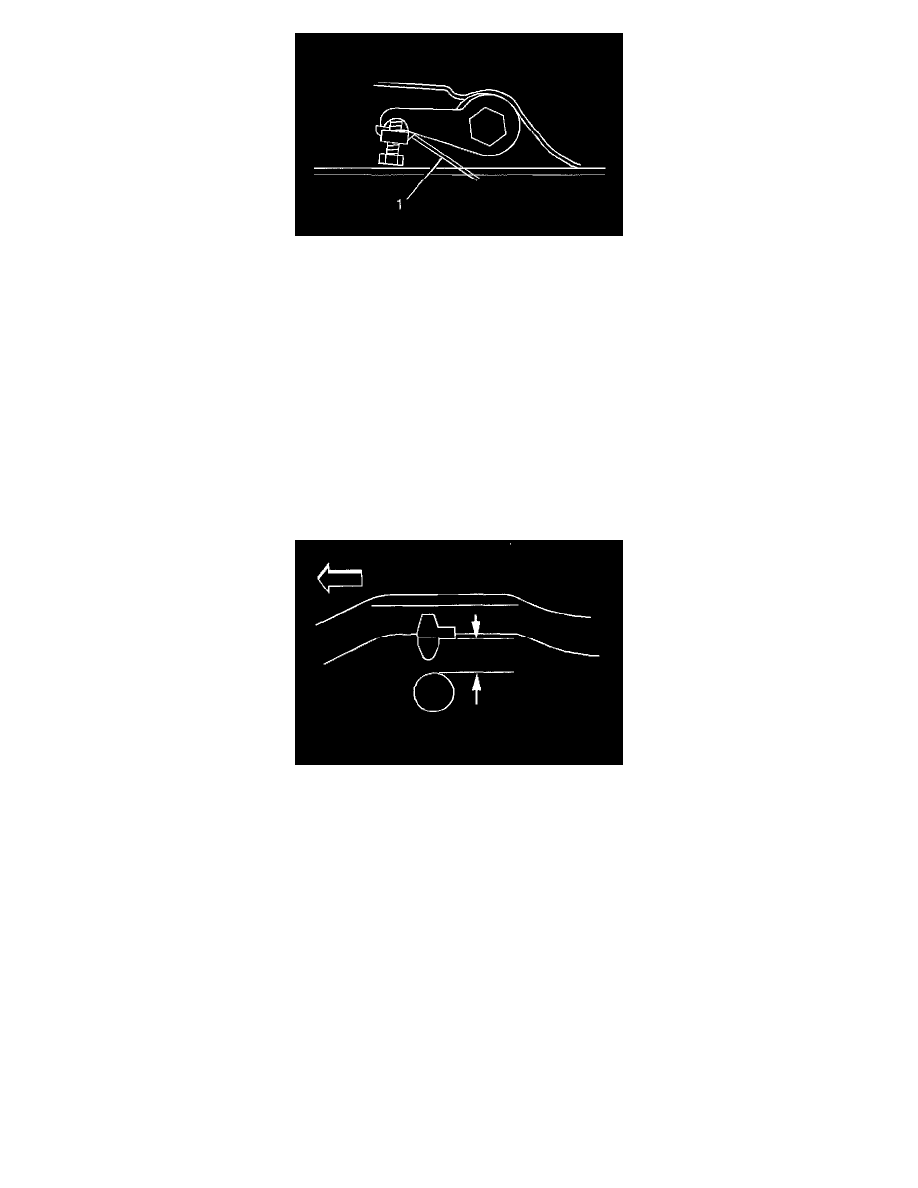Tahoe 2WD V8-4.8L VIN V (2004)

1. For vehicles equipped with a torsion bar suspension turn the bolt (1) that contacts the torsion arm as needed. One revolution of the bolt (1) into the
nut increases the Z height by approximately 6.0 mm (0.2 inch).
2. For vehicles without torsion bars, replace damaged or worn components as necessary.
3. If these measurements are still out of specifications after adjustment or are not equipped with torsion bars, inspect for the following:
^
Sagging front suspension.
^
Collision Damage
D Height Measurement
Important: There are no specified trim heights specifications on leaf spring vehicles because it is not an adjustable feature. The height of the
suspension will depend on the option content of the vehicle as well as the aftermarket equipment that is placed on the vehicle. The measurements are
used for comparison only and should be within 15 mm with the vehicle at curb and no accessories.
1. Place hand on the rear bumper and jounce the rear of the vehicle. Make sure that there is at least 38 mm (1.5 inch) of movement while jouncing.
2. With the vehicle on a flat surface, lift upward on the rear bumper 38 mm (1.5 inch).
3. Allow the vehicle to settle into position.
Important: Measure the metal to metal contact points of the rear axle to the frame on the inboard side of the leaf springs.
4. Measure the D height by measuring the distance between the bumper bracket and the top of the rear axle tube.
5. Repeat the jouncing operation 2 more times for a total of 3 times.
6. Use the highest and lowest measurements to calculate the average height.
7. The true D height dimension number is the average of the highest and the lowest measurements.
8. If these measurements are out of specifications, inspect for the following conditions:
^
Sagging front suspension
^
Sagging rear leaf/coil springs
^
Worn rear suspension components, such as leaf spring bushings
^
Improper tire inflation
^
Improper weight distribution
^
Collision damage
